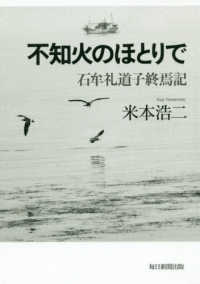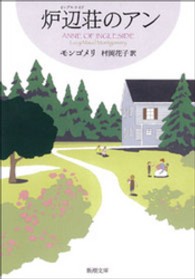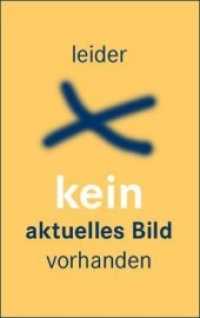- ホーム
- > 洋書
- > ドイツ書
- > Humanities, Arts & Music
- > History
- > antiquity
Description
(Short description)
(Text)
(Short description)
This tribute by a baker's dozen of women to the esteemed Coptologist Gawdat Gabra comprises articles dealing with subjects reflecting his scholarly interests in the art and archaeology of Egypt which span more than three millennia. Following on Martin Krause's laudatio and the list of Gawdat's publications, four contributions (among them the publication of a number of liturgical objects in metal) focus on holdings of Cairo's Coptic Museum, an institution with which he has been closely associated for over a quarter century. The production of pottery at monasteries, an icon painted by Ibrahim el-Nasikh in the mid-18th century, and the iconography of Zacharias, father of St. John the Baptist, are the subjects of articles, as are Coptic stelae from the Fayum, a group of rare embroidered textiles, an very unusual donor portrait among the paintings of the Red Monastery, and a mendicant statue of the New Kingdom supposedly from Edfu, the site of Gawdat's first posting as an inspector ofantiquities.
(Text)
nchsdarstellungen in der Hauptkirche des so genannten Roten Klosters wird als Stifter identifiziert. Darstellungen von Episoden aus dem Leben des Zacharias, dem Vater Johannes des Täufers, werden erstmals umfassend zusammengetragen. Darüber hinaus wird eine Ikone aus der Mitte des 18. Jahrhundert von Ibrahim al-Nasikh mit der Darstellung der Heiligen Rebecca und ihrer fünf Kinder in technischer und ikonographischer Hinsicht eingehend untersucht.
Trotz oft unzulänglicher Herkunftsangaben gelingt es Sofia Schaten, eine Gruppe christlicher Grabstelen mit Orantendarstellungen anhand typischer Merkmale dem Fayyum zuzuweisen.
Mit einem Beitrag über eine Bettlerstatue des Neuen Reiches, vermutlich aus Edfu, rundet Marianne Eaton-Krauss diese Festgabe ab und führt damit nicht nur in die Pharaonenzeit, sondern auch zur ersten Wirkungsstätte Gawdat Gabras als Inspektor für Altertümer zurück.








